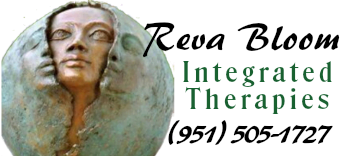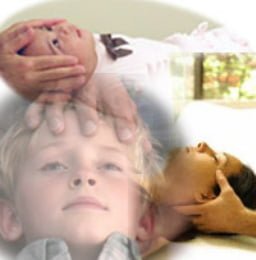CranioSacral Therapy (CST) is a gentle, hands-on approach that releases tensions deep in the body to relieve pain and dysfunction and improve whole-body health and performance. It was pioneered and developed by Osteopathic Physician John E. Upledger after years of clinical testing and research at Michigan State University where he served as professor of biomechanics.
Using a soft touch which is generally no greater than 5 grams – about the weight of a nickel – practitioners release restrictions in the soft tissues that surround the central nervous system. CST is increasingly used as a preventive health measure for its ability to bolster resistance to disease, and it”s effective for a wide range of medical problems associated with pain and dysfunction.
CranioSacral Therapy is a gentle, hands-on method of evaluating and enhancing the functioning of a physiological body system called the craniosacral system – comprised of the membranes and cerebrospinal fluid that surround and protect the brain and spinal cord.
By complementing the body’s natural healing processes, CranioSacral Therapy is increasingly used as a preventive health measure for its ability to bolster resistance to disease, and is effective for a wide range of medical problems associated with pain and dysfunction.
Conditions that can be helped.
Frequently Asked Questions
How does CranioSacral Therapy Work?
Few structures have as much influence over the body’s ability to function properly as the brain and spinal cord that make up the central nervous system. And, the central nervous system is heavily influenced by the craniosacral system – the membranes and fluid that surround, protect and nourish the brain and spinal cord.
Every day your body endures stresses and strains that it must work to compensate for. Unfortunately, these changes often cause body tissues to tighten and distort the craniosacral system. These distortions can then cause tension to form around the brain and spinal cord resulting in restrictions. This can create a barrier to the healthy performance of the central nervous system, and potentially every other system it interacts with.
Fortunately, such restrictions can be detected and corrected using simple methods of touch. With a light touch, the CST practitioner uses his or her hands to evaluate the craniosacral system by gently feeling various locations of the body to test for the ease of motion and rhythm of the cerebrospinal fluid pulsing around the brain and spinal cord. Soft-touch techniques are then used to release restrictions in any tissues influencing the craniosacral system.
By normalizing the environment around the brain and spinal cord and enhancing the body’s ability to self-correct, CranioSacral Therapy is able to alleviate a wide variety of dysfunctions, from chronic pain and sports injuries to stroke and neurological impairment.
What Can I Expect From a Session?
A typical CranioSacral Therapy session takes place in a quiet, private setting. You remain fully clothed as you relax on a comfortable, padded table.
Your therapist begins by gently touching various parts of your body to monitor the rhythm of the fluid that is flowing around the central nervous system.
By carefully listening with the hands to locate areas of weak fluid flow or tissue motion, your practitioner can trace those areas of weakness through the body to the original source of dysfunction.
Delicate manual techniques are then used to release those problem areas and improve the form and function of your central nervouse system.
A CranioSacral Therapy session can last up to an hour or more. It can be used alone or integrated with other therapies to create powerful effects.
What you experience from your own session is highly individual. The sessions are generally deeply relaxing, creating feelings of warmth or gentle pulsing in the areas the therapist is working on.
Is there any condition for which CST shouldn’’t be used?
There are certain situations where application of CST would not be recommended. These include conditions where a variation and/or slight increase in intracranial pressure would cause instability. Acute aneurysm, cerebral hemorrhage or other preexisting severe bleeding disorders are examples of conditions that could be affected by small intracranial pressure changes.
How many CranioSacral Therapy sessions will I need?
Response to CST varies from individual to individual and condition to condition. Your response is uniquely your own and can”t be compared to anyone else”s — even those cases that may appear to be similar to your own. The number of sessions needed varies widely — from just one up to three or more a week over the course of several weeks.
When was CranioSacral Therapy developed?
It was in 1970, during a neck surgery in which he was assisting, that osteopathic physician John E. Upledger first observed the rhythmic movement of what would soon be identified as the craniosacral system. None of his colleagues nor any of the medical texts at the time could explain this discovery, however.
His curiosity piqued, Dr. Upledger began searching for the answer. He started with the research of Dr. William Sutherland, the father of cranial osteopathy. For some 20 years beginning in the early 1900s, Sutherland had explored the concept that the bones of the skull were structured to allow for movement. For decades after, this theory remained at odds with the beliefs of the scientific and medical communities. Dr. Upledger believed, however, that if Sutherland’s theory of cranial movement was in fact true, this would help explain, and make feasible, the existence of the rhythm he had encountered in surgery.
It was at this point that Dr. Upledger set out to scientifically confirm the existence of cranial bone motion. From 1975 to 1983 he served as clinical researcher and Professor of Biomechanics at Michigan State University, where he supervised a team of anatomists, physiologists, biophysicists and bioengineers in research and testing. The results not only confirmed Sutherland’s theory, but led to clarification of the mechanisms behind this motion — the craniosacral system. Dr. Upledger’s continued work in the field ultimately resulted in his development of CranioSacral Therapy.
Migraine Headaches
Chronic Neck and Back Pain
Motor-Coordination Impairments
Colic
Autism
Central Nervous System Disorders
Orthopedic Problems
Traumatic Brain and Spinal Cord Injuries
Post-Surgical Dysfunction
Post-Traumatic Stress Disorder
Scoliosis
Infantile Disorders
Learning Disabilities
Chronic Fatigue
Emotional Difficulties
Stress and Tension-Related Problems
Fibromyalgia and other Connective-Tissue Disorders
Temporomandibular Joint Syndrome (TMJ)
Neurovascular or Immune Disorders
And More..

